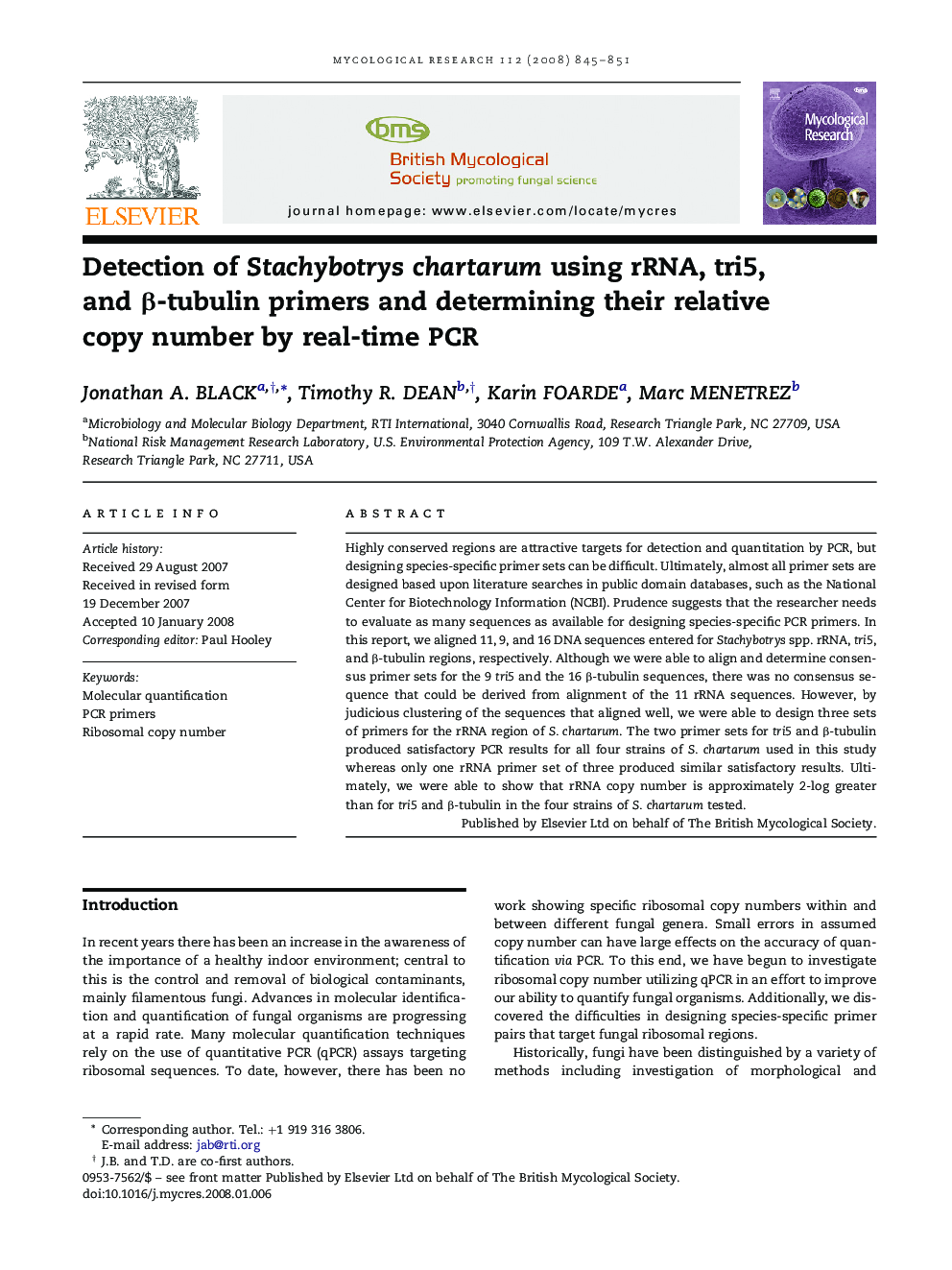| Article ID | Journal | Published Year | Pages | File Type |
|---|---|---|---|---|
| 4357748 | Mycological Research | 2008 | 7 Pages |
Abstract
Highly conserved regions are attractive targets for detection and quantitation by PCR, but designing species-specific primer sets can be difficult. Ultimately, almost all primer sets are designed based upon literature searches in public domain databases, such as the National Center for Biotechnology Information (NCBI). Prudence suggests that the researcher needs to evaluate as many sequences as available for designing species-specific PCR primers. In this report, we aligned 11, 9, and 16 DNA sequences entered for Stachybotrys spp. rRNA, tri5, and β-tubulin regions, respectively. Although we were able to align and determine consensus primer sets for the 9 tri5 and the 16 β-tubulin sequences, there was no consensus sequence that could be derived from alignment of the 11 rRNA sequences. However, by judicious clustering of the sequences that aligned well, we were able to design three sets of primers for the rRNA region of S. chartarum. The two primer sets for tri5 and β-tubulin produced satisfactory PCR results for all four strains of S. chartarum used in this study whereas only one rRNA primer set of three produced similar satisfactory results. Ultimately, we were able to show that rRNA copy number is approximately 2-log greater than for tri5 and β-tubulin in the four strains of S. chartarum tested.
Keywords
Related Topics
Life Sciences
Agricultural and Biological Sciences
Agricultural and Biological Sciences (General)
Authors
Jonathan A. Black, Timothy R. Dean, Karin Foarde, Marc Menetrez,
